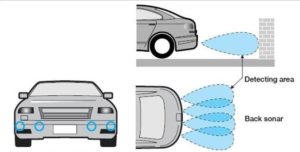Introduction
Self-driving cars incorporate a raft of new technologies. Among several drivers of adoption, the business models of well-funded ride-hailing services depend on rapid introduction of vehicle autonomy. In this environment, IP attorneys should expect increasing patent litigation around the enabling technology and as such may require the assistance of autonomous vehicle expert witnesses.
Self-driving automobiles require many sensors to provide “situational awareness” – the ability of the vehicle to act safely given its speed, heading, surroundings and weather. Many systems are involved in creating this awareness. Some are easy to understand – cameras of various sorts are the most obvious example. Full situational awareness involves additional sensing modalities like ultrasound, radar, and lidar. These may seem specific to the automotive realm, but there are deep similarities between these technologies and others such as medical imaging.
How could autonomous vehicle technology be like medical imaging?
Start by breaking the technology down into its components. Each sends and receives waves: sound, radio and light waves. Gaining actionable information from this call-and-response needs several components:
- Sensors (also called transducers). These turn electrical signals – the currency of computerized systems – into the waves which travel into the local environment. Most sensors also do the reverse transformation, back into the electrical signals.
- Semiconductors, which mediate between the sensor and the mathematical analysis that follows.
- Signal processing. This takes the digital signals created by the semiconductors and creates the situational awareness. Artificial intelligence is applied after the scene around the car is reconstructed.
Surprisingly, these three also form the main components of diagnostic imaging systems.
Automotive Ultrasound Sensing
Ultrasonic sensors find obstacles, such as cars, pedestrians and features of buildings. They are useful for blind spot detection and parking. The technology is analogous to sending out a sound from a loudspeaker and receiving it with a microphone. Available from many OEMs, this is the cheapest of the three technologies we are discussing. The system needs to compensate for ultrasound’s sensitivity to temperature and humidity.
How is this like medical imaging? There is a close analogy with a diagnostic ultrasound system, as it uses the same waves, plus similar electronics and processing. Figure 1 illustrates how ultrasound sensors are fitted to an autonomous vehicle.
Figure 1: Common positions for ultrasonic sensors, and illustrations of the areas they can sense. Ultrasound is useful for sensing near the vehicle.
Automotive Radar Sensing
Radar (Radio Detection And Ranging) was arguably the most important innovation of World War II. Figure 2 shows how it operates in an autonomous vehicle. There is usually at least a short-range and a long-range radar system. Long-range radar finds vehicles in the distance, for example for cruise control based upon the locations of vehicles a hundred meters or more ahead. The short-range radar provides awareness of cross traffic and blind spots.
Figure 2: Radar in a car can be short- or long-range. This illustration shows some of the applications for the long-range (dark blue) and short-range (light blue) radars.
Radar reveals the distance from the car to objects, and their speed through the Doppler effect (the change in a train horn’s pitch as it goes past.) Advantages of radar include resistance to light level, rain, fog, snow, and dust. Unfortunately, radar cannot provide height information: its output is only a two-dimensional map.
How is radar like medical imaging?
- Electromagnetic fields are the basis of the sensing, as in an MRI scanner. Interestingly, diagnostic ultrasound began by copying radar techniques.
- The Doppler effect is used for blood flow velocity measurement in most ultrasound scans.
- Modern automotive radars no longer use rotating antennae like we see at an airport. Instead, arrays of elements are used, just as in clinical MRI and ultrasound, to electronically steer the beam.
Lidar
Lidar (Light Detection And Ranging) was originally a portmanteau of light and radar. It is sometimes called 3D Laser Scanning. Figure 3 shows an outline of a lidar system.
Figure 3: Basics of a lidar system. In many systems, the output of a laser is reflected by a rotating mirror to point the laser beam in different directions for scanning.
The key point about lidar is that it produces 3D data – an actual outline of pedestrians, other vehicles and features of the landscape. This is typically delivered as a “point cloud” which is simply a list of data points in space. A drawback is the need for multiple beams (up to 64) for reliable distance measurements in unfavorable weather.
Producing a scan is difficult for a lidar system because there is no counterpart to array-based electronic scanning used in ultrasound and radar. Many existing devices require a bulky rotating apparatus, but some newer systems replace this with MEMS micro-mirrors. Lidar cannot produce accurate speed measurements, unlike ultrasound and radar. In this sense, lidar is closer to X-ray medical imaging systems than ultrasound or MRI.
Conclusion
A major task for an expert witness is to explain technology to educate the finder of fact. Understanding commonalities between diverse areas is helpful, as drawing comparisons communicates in ways an explanation from one area of technology cannot. A self-driving vehicle expert witness may be used in lawsuits involving autonomous vehicles and their sensing technology.
About the author
Dr. Chris Daft is an award winning, Oxford Educated scientist. He is an expert witness and consultant whose areas of expertise include sensors, semiconductors, signal processing and medical imaging. Dr. Daft has extensive Intellectual Property experience including patent development, analysis, licensing, strategy, and serving as an expert witness who has given testimony at deposition and trial. He is a serial inventor who holds 22 U.S. Patents with more pending. Dr. Daft holds a BA and MA in Physics from Oxford, and a Doctorate from Oxford in Materials Science. The author may be contacted at:
chris.daft@riversonicsolutions.com
+1 (415) 800-3734 office +1 (408) 806 7525 cell
River Sonic Solutions LLC 2443 Fillmore St #380-4039, San Francisco, CA 94115









